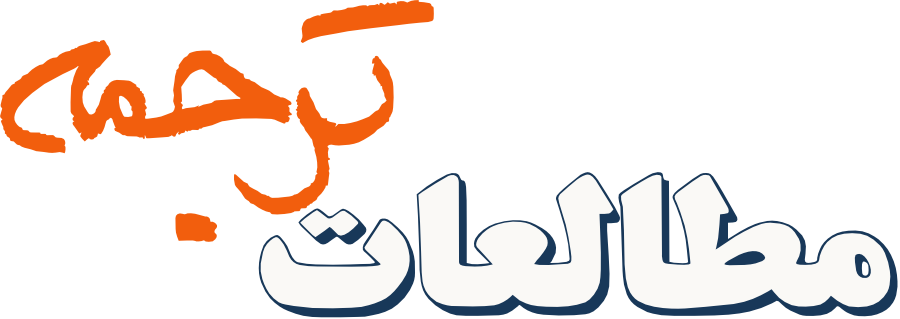از آسیب روانی تا آفرینش متن
طبقهبندی عناصر متنی روانکاوانه در ترجمه
چکیده
Psychoanalysis has scarcely been applied as an instrument of textual analysis in literary criticism; even fewer cases of this application, either in terms of product or process analysis, exist within the field of translation studies. Consequently in order to develop a psychoanalytic method of textual analysis suitable to translation, the abundant literature on Lacanian psychoanalysis was first revisited to distinguish those paradigms and principles on text most valid for an analysis of psychotic language. The result was a taxonomy of textual elements, either introduced in or else inferred from the field of Lacanian psychoanalysis: non-sensical, anchoring points, cohesion, heteroglossia, la langue, musical competency, and imagery with their sub-types, all elements which permitted text producers/reproducers to vent out their psychoanalytic conflicts (with the discourse in which the subject has functioned) into construction of texts in a manner not unlike psychoanalysis sessions. As an instrument of analysis, the taxonomy here developed, therefore, has the potential to be applied in its totality or partially and with some adaptations into future researches.
کلمات راهنما:
روانکاوی لاکانی, تحلیل متنی, زبان روانپریشانهمراجع
Afrouz, M. (2019). A Comparative-analytic Study of some Theoretical Issues in Translation Studies via Freud’s Ideas. Translation Studies Quarterly, 17(66), 23–36.
Balinisteanu, T. (2013). Violence, narrative and myth in Joyce and Yeats: Subjective identity and anarcho-syndicalist traditions. London: Palgrave Macmillan.
Bancroft, A. (2012). Fashion and psychoanalysis: Styling the self. London: L. B. Tauris.
Bourbon, B. (2004). Finding a replacement for the soul: Mind and meaning in literature and philosophy. Cambridge, MA: Harvard University Press.
Bowen, Z. (1974). Musical allusions in the works of James Joyce: Early poetry through Ulysses. Albany, NY: State University of New York Press.
Campbell, K. S. (2008). Coherence, continuity, and cohesion: Theoretical foundations for document design. New York, NY: Routledge.
Dettmar, K. J. H. (1996). The illicit Joyce of postmodernism: Reading against the grain. Madison, WI: The University of Wisconsin Press.
Henke, S. A. (2016). James Joyce and the politics of desire (Rev. ed.). Oxon, UK: Routledge.
Joyce, J. (1914). Dubliners. London: G. Richards. Available from https://archive.org/details/dubliners00joycrich/page/24
Evans, D. (1996). An introductory dictionary of Lacanian psychoanalysis. London: Routledge.
Felman, S. (1987). Jacques Lacan and the adventure of insight: psychoanalysis in contemporary culture. Cambridge, M.A.: Harvard University Press.
Garrett, M. (2019). Psychotherapy for psychosis: Integrating cognitive-Behavioral and psychodynamic treatment. New York, NY: The Guilford Press.
Gifford, D, & Seidman, R. J. (1989). Ulysses Annotated: Notes for James Joyce's Ulysses (2nd ed.). Los Angeles, CA: The Regents of the University of California.
Halliday, M.A.K., & Hasan, R. (2013). Cohesion in English (Rev. ed.). Oxon, UK: Routledge.
Haynes, J. (1987). African poetry and the English language. London: Palgrave Macmillan.
Humphrey, R. (1954). Stream of consciousness in the modern novel: A study of James Joyce, Virginia Woolf, Dorothy Richardson, William Faulkner, and others. Berkeley, CA: University of California Press.
Ingram, S. (2003). Translation studies and psychoanalytic transference. TTR: Traduction, Terminologie, Rédaction, 14(1). pp. 95–114.
Johnson, J. (Ed.) (2000). Introduction. In J. Joyce, Dubliners (pp. vii–xl). x1). Oxford, UK: Oxford University Press.
Joyce, J. (1944). Stephen Hero: Part of the first draft of “A portrait of the artist as a young man (T. Spencer, Ed.). London: Jonathan Cape. Available from https://archive.org/details/in.ernet.dli.2015.59181/page/n3
Lacan, J. (2002). The situation of psychoanalysis and the training of the psychoanalysts in 1956. In Écrits (B. Fink, Trans.) (pp. 384–411). New York: W. W. Norton & Company. (Original work published 1966)
Leonard, G. M. (1993). Reading Dubliners again: A Lacanian perspective. Syracuse, NY: Syracuse University Press.
Libbrecht, K. (2017). The original sin of psychoanalysis: On the desire of the analyst. In D. Nobus (Ed.), Key concepts of Lacanian psychoanalysis (2nd ed.) (pp. 75–100). London: Karnac.
Mahony, P. (2001). Parameters of psychoanalysis. American Imago, 58(4). pp. 837–840.
Morgan, M. (2016) Get knotted. In L. Clifton (Ed.), Since Lacan: Papers of the Freudian school of Melbourne (Vol. 25, pp. 63–72). London: Karnac.
Norris, M. (2003). Suspicious readings of Joyce's “Dubliners”. Pensylvania, PA: University of Pennsylvania Press.
Parker, I. (2014). Lacaian discourse analysis: Seven elements. In I. Parker, & D. Pavón-Cuéllar (Eds.), Lacan, discourse, event: New psychoanalytic approaches to textual indeterminacy (pp. 38–51). East Essex, UK: Routledge.
Patsalides, A., & Malone, K. R. (2000). Jouissance in the cure. In K. R. Malone, & S. R. Friedlander (Eds.), Subject of Lacan, the: A Lacanian reader for psychologists (pp. 123–134). Albany, NY: State University of New York Press.
Rabaté. J-M. (2001). James Joyce and the politics of egoism. Cambridge, UK: Cambridge University Press.
Rogers, A. G. (2016). Incandescent alphabets: Psychosis and the enigma of language. London: Karnac.
Saldanha, G & O`Brien, S. (2013). Research methodologies in translation studies. Manchester, UK: ST Jerome.
Schwarz, D. (1997). Listening subjects: Music, psychoanalysis, culture. Durham, UK: Duke University Press.
Taboada, M. T. (2004). Building coherence and cohesion: Task-oriented dialogue in English and Spanish. Amsterdam: John Benjamins.
Vice, S. (1997). Introducing Bakhtin. Manchester, UK: Manchester University Press.
Wales, K. (2011). A dictionary of stylistics (3rd ed.). Oxon, UK: Routledge.
چاپشده
ارجاع به مقاله
شماره
نوع مقاله
مجوز
Copyright Licensee: Iranian Journal of Translation Studies. This article is an open access article distributed under the terms and conditions of the Creative Commons Attribution–NonCommercial 4.0 International (CC BY-NC 4.0 license).





